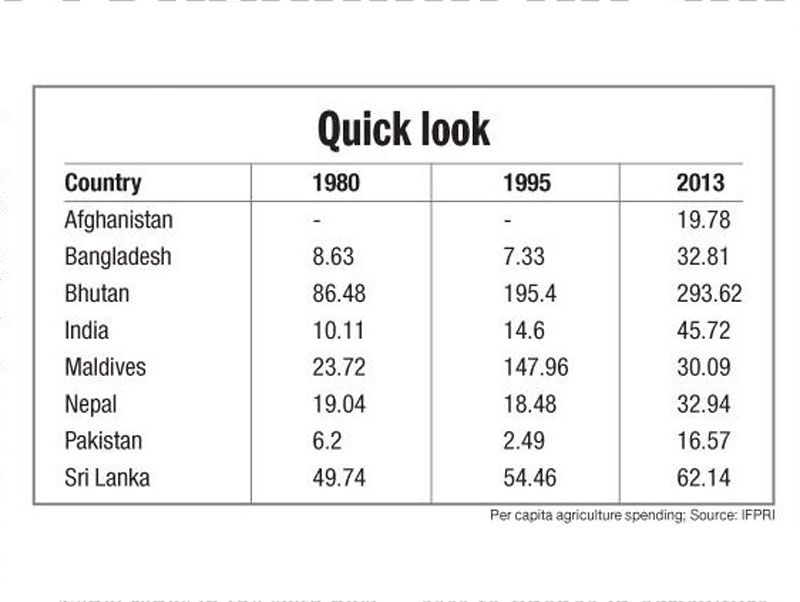Per capita spending on agro on rise
Expenditure in the agriculture sector has been increasing in the country over the years. However, the country’s total expenditure on agriculture is just 5.29 per cent of the total agricultural gross domestic product (AGDP).
A recent report unveiled by the International Food Policy Research Institute (IFPRI) — US-based agricultural research institute — reveals that low spending, lack of mechanisation and commercialisation, and lack of linkages between production and market, are the major challenges of transforming agriculture in low income countries like Nepal.
Against this backdrop, Nepal’s per capita expenditure in agriculture has been rising over the years. As per Global Food Policy Report, 2016, unveiled by IFPRI, a Nepali spends $32.94 per year on agriculture production (as per data of 2013), which was $18.48 in 1995 and $19.04 in 1980s. Such calculation was made on purchasing power parity of country. Though spending has gone up over the years, productivity has not risen in same ratio.
Nepal ranks in the sixth position among South Asian countries in terms of spending in agriculture as compared to AGDP. However, the country ranks in the fifth position in terms of per capita spending in agriculture beating Pakistan, Afghanistan and Maldives.
Agriculture covers one-third share of the Nepal’s GDP and two-third of country’s workforce is reliant on agriculture sector. The land ownership structure in the country, domination of small-holder farmers, lack of access to finance in agriculture, and lack of proper irrigation facility, among others, have been identified as the major barriers that are obstructing agriculture from moving towards mechanisation and commercialisation.
IFPRI, since 2013, has been supporting the government in framing agriculture policies, establishing market linkage to the agriculture products, enhancing quarantine standards and labs, among others.






